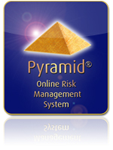17 Different Types of Food Poisoning and Notable Cases
Food poisoning (also known as foodborne illness or foodborne disease) is any illness that results from eating contaminated food. Below is a guide to the 17 most common types of food poisoning. This guide includes a description of the type of food poisoning, the source, the symptoms suffered, when symptoms will start showing, prevention and notable cases as reported by the media. Please also see our food safety page for our related food hygiene services.
Jump to:
- Bacillus
- Campylobacter
- Clostridium Botulinum (Botulism)
- Clostridium perfringens
- Cronobacter sakazakii
- Cryptosporidium
- Escherichia coli (E. coli)
- Hepatitis A
- Listeria
- MRSA
- Norovirus
- Salmonella
- Shigella
- Staphylococcus
- Toxoplasma
- Vibrio cholerae
- Vibrios
Bacillus
Bacillus cereus or B. cereus is a type of bacteria found widely in the environment in dust, soil and vegetation that produces toxins. These bacteria are present in foods and can multiply quickly at room temperature. Most surfaces would be likely to test positive for the presence of the bacterium.
Sources
- Rice
- Prepared foods that have been left out in room temperature for too long (Sauces, soups)
Symptoms
- Diarrhoea
- Abdominal cramps
- Nausea
- Vomiting
How long before symptoms occur?
1 to 6 hours after consumption of the bacteria.
Prevention
- Maintain a temperature of 63°C to control the multiplication of bacteria in hot food.
- Food should be cooled as quickly as possible and then refrigerated
- A temperature of 8°C or below is effective in controlling the multiplication of most bacteria in perishable food
- It is recommended practice to operate refrigerators and chills at 5°C or below.
Notable Case
One baby died and 14 fell ill with blood poisoning after being given what appeared to be a contaminated batch of liquid food. The babies, in neonatal intensive care units at six hospitals across England were fed the liquid directly into their bloodstream.
Campylobacter
Nicknamed the ‘barbecue bug’, this is the most common food poisoning bacteria in Britain and the United States. Campylobacter cases mostly occur as isolated events and not as part of recognized outbreaks. Campylobacter bacteria are found in many animals including dogs, cats, poultry and cows.
Sources
- Raw and undercooked poultry
- Contact with infected animals
- Unpasteurized milk
- Untreated water
Symptoms
- Diarrhoea (can sometimes be bloody)
- Abdominal cramps
- Fever
- Vomiting
How long before symptoms occur?
Anything from one to ten days.
Prevention
- Always cook meat, especially poultry, to safe minimum temperatures.
- Keep raw meat, especially poultry, separate from other foods.
- Do not drink raw or unpasteurized milk.
Notable Case
Investigation by health officials commenced after 80 guests at the five-star Lowry Hotel in Greater Manchester suffered from campylobacter in 2011.
Clostridium Botulinum (Botulism)
Botulism is a rare but serious illness caused by a bacterium which occurs in soil. The toxins produced by Clostridium botulinum bacteria can potentially kill. The toxins attack the nervous system and cause paralysis.
Sources
- Typical contaminated foods include custard, cream-filled pastry, milk, processed meats, and fish
Symptoms
- Diarrhoea
- Abdominal cramps
- Nausea
- Vomiting
How long before symptoms occur?
6 to 24 hours
Prevention
- Not eating canned food if the container is bulging or smells bad
- Cook canned food to safe minimum temperatures
Notable Case
At least 70 cows died following an outbreak of botulism on a farm in Carmarthenshire, Wales in 2014.
Clostridium perfringens
Clostridium perfringens are bacteria that produce toxins harmful to humans and is one of the most common causes of food poisoning. This type of bacteria causes nearly a million illnesses each year according to estimates. C. perfringens infections often occur when foods are prepared in large quantities and are then kept warm for a long time before serving and are usually linked to catered food providers e.g. hospitals, schools and nursing homes.
Sources
- Beef
- Poultry
- Gravies
Symptoms
- Abdominal pain
- Diarrhea
- Nausea
- Fever
- Vomiting
How long before symptoms occur?
6 to 24 hours after consuming the bacteria or toxins.
Prevention
- Cook foods containing meat thoroughly
- Reheat foods to 82°C, which will ensure that food has been reheated to a safe and, in some cases, legally required temperature.
- Maintain a temperature of 63°C to control the multiplication of bacteria in hot food.
- Food should be cooled as quickly as possible and then refrigerated
- A temperature of 8°C or below is effective in controlling the multiplication of most bacteria in perishable food
- It is recommended practice to operate refrigerators and chills at 5°C or below.
- Freezing of food at temperatures of -18°C or below will prevent bacteria multiplying.
Notable Case
A woman died and 30 fell ill after Christmas lunch in the east end London in 2012. Following investigation by public health official, clostridium perfringens bacteria had been found in samples from the woman who died and others affected by the outbreak of illness.
Cronobacter sakazakii
Cronobacter sakazakii is a bacterium that causes a rare but often fatal infection of the bloodstream and central nervous system. Most cases of Cronobacter sakazakii come from powdered infant formula contaminated with the bacterium. An Cronobacter sakazakii infection can also turn lead to meningitis.
Sources
- Baby formula
Symptoms
- Poor feeding response
- Irritability
- Jaundice
- Grunting while breathing
- Unstable body temperature
- High fever (Meningitis symptom)
- Constant crying (Meningitis symptom)
- Excessive sleepiness or irritability (Meningitis symptom)
- Sluggishness (Meningitis symptom)
- Poor feeding (Meningitis symptom)
- A bulge in the soft spot on the top of the head (Meningitis symptom)
- Stiffness of the body and neck (Meningitis symptom)
- Seizures (Meningitis symptom)
Prevention
- Use hot water to make baby milk from infant formula powder — Water should reach a heat of 158°F (70°C)
- Follow the manufacturer’s instructions for preparing baby milk from powdered formula
- Throw out prepared formula if not used within 24 hours of preparing it
Notable Case
There was a threat of an emerging infection during 2004 following testing carried out by Dutch researchers in 2004. Traces of a bacterium had been found in each of four infant formula milk factories tested.
Cryptosporidium
Cryptosporidium is a parasite. A parasite is a living organism that lives in, or on, another organism. Young children are most likely to become infected.
Sources
- Food and water that has been contaminated by faeces from humans or animals
Symptoms
- Diarrhea
- Abdominal cramps
- Fatigue
- Fever
- Nausea
- Loss of appetite
How long before symptoms occur?
Generally begin 2 to 10 days after becoming infected with the parasite.
Prevention
- Wash hands before preparing food, after changing the nappies of infants, and after contact with farm animals.
- Wash raw vegetables
Notable Case
The 1993 Milwaukee cryptosporidiosis outbreak remains the largest epidemic of waterborne disease in U.S. history. During a two-week period, an estimated 403,000 people in Milwaukee reported sudden acute watery diarrhea.
Escherichia coli (E. coli)
E. coli are bacteria found in the intestines of many animals, including humans. Most strains of the bacteria are harmless but some can cause serious illness.
Sources
- Contaminated food, especially undercooked ground beef
- Unpasteurized milk and juice
- Soft cheeses made from raw milk
- Raw fruits and vegetables
- Contaminated water (drinking untreated water or swimming in contaminated water)
- Animals and their environment: especially cows, sheep, and goats.
Symptoms
- Severe diarrhea (often bloody)
- Severe abdominal pain
- Vomiting
How long before symptoms occur?
Between 12 hours and three days.
Prevention
- Avoid eating high-risk foods, especially undercooked ground beef, unpasteurized milk or juice, soft cheeses made from unpasteurized milk.
- Make sure that ground beef has reached a safe internal temperature
- Wash hands before preparing food, after changing the nappies of infants, and after contact with animals or their living environment.
Notable Case
The 2011 Germany E. coli O104:H4 outbreak is the deadliest bacterial foodborne outbreak in Europe. More than 3,950 infections were reported and caused the death of 53 people. A handful of cases were reported in several other countries including Switzerland, Poland, the Netherlands, Sweden, Denmark, the UK, Canada and the USA. Essentially all affected people had been in Germany or France shortly before becoming ill. The source of the outbreak was traced to a farm in Germany that produced a variety of sprouted foods.
Hepatitis A
Hepatitis A is the only common foodborne disease preventable by vaccine and is one of five hepatitis viruses that infect the liver.
Sources
- In cases of contaminated food, it is usually the person preparing the food who contaminates it.
Symptoms
- Muscle aches
- Headache
- Loss of appetite
- Abdominal pain
- Fever
- Weakness and fatigue
How long before symptoms occur?
Usually appear around 28 days after infection, but can start as early as two weeks after catching the virus.
Prevention
- >Wash hands before preparing food and after changing the nappies of infants.
Notable Case
The largest foodborne hepatitis outbreak was in the United States in 2003. It afflicted at least 640 people, killing 4. The outbreak was blamed on tainted green onions at a Chi-Chi’s restaurant in Monaca, Pennsylvania.
Listeria
Listeria is the name of a bacteria found in soil and water and some animals. Listeria is unlike many other germs because it can grow even in the cold temperature of the refrigerator. Listeria infection is known as listeriosis. Listeria is especially dangerous for pregnant women as it can cause miscarriage or be passed on to the unborn baby.
Sources
- Soft cheese (such as Brie or Camembert)
- Ready to eat food (such as pre-packed sandwiches and cooked sliced meats)
- Poultry
- Meat
- Pate
- Salads (vegetables grown in contaminated soil)
Symptoms
- Fever
- Nausea
- Weakness
- Vomiting
- Diarrhea
How long before symptoms occur?
Symptoms may begin appearing a few days after you’ve eaten contaminated food, but it can take as long as two months before the first signs and symptoms of infection begin.
Prevention
- Eat foods by their “use-by” dates
- Rinse raw produce thoroughly under running tap water before eating.
- Do not drink raw (unpasteurized) milk, and do not eat foods that have unpasteurized milk in them.
- Wash hands, knives, counter tops, and cutting boards after handling and preparing uncooked foods.
Notable Case
In 1985, there was a listeria outbreak in Mexican style soft cheese made by California based company Jaliso. It was the deadliest foodborne illness outbreak in the history of the United States at the time. The outbreak tragically resulted in 52 confirmed deaths, including 19 stillbirths and 10 infant deaths.
MRSA
MRSA, or Methicilin-resistant Staphylococcus aureus, is the form of Staphylococcus aureus bacteria (or staph infection) that is resistant to antibiotics. MRSA outbreaks from food contamination are rare.
Sources
- Human skin and nose
- Recent studies have shown that livestock also carry MRSA
Symptoms
- Nausea
- Vomiting
- Abdominal cramps
How long before symptoms occur?
Previous cases of foodborne MRSA started to show their sysmptoms 3 to 4 hours after consiming the contaminated food.
Prevention
- Washing your before handling food
- Wash produce
- Wash anything that has been in contact with raw meat or poultry
- Food should be cooled as quickly as possible and then refrigerated
- Always cook to safe minimum temperatures.
Notable Case
MRSA had been found in chicken and turkeys in the UK during 2003. Experts said the risk to the public wass very low, should someone contact MRSA from the poultry, it would involve a mild skin infection which would clear up quickly.
Norovirus
Norovirus is usually transmitted from the faeces to the mouth, either by drinking contaminated food or water or by passing from person to person. The virus affects around 267 million people and causes over 200,000 deaths each year.
Sources
- Raw or lightly cooked shellfish has been known to infect a person with norovirus.
Symptoms
- Nausea
- Diarrhea
- Vomiting
- Abdominal cramps
- Headache
- Fever
How long before symptoms occur?
24 to 48 hours
Prevention
- Wash hands properly
- Wash raw vegetables
- Disinfect any surfaces or objects that could be contaminated with the virus.
- Avoid letting anyone known to have norovirus in kitchen areas
- Ensure shellfish is to cook thoroughly
Notable Case
In 2014, nearly 700 people on a cruise ship, the Royal Caribbean ship Explorer of the Seas had been infected by norovirus. Health officials stated it was one of the biggest norovirus outbreaks in 20 years.
Salmonella
Salmonella is a type of bacteria in the intestines of animals and is a very common cause of food poisoning. Salmonella can cause more serious illness in older adults, infants, and persons with chronic diseases.
Sources
- Raw eggs
- Poultry
- Meat
- Unpasteurized milk
- Cheese
- Animals, particularly reptiles, amphibians and birds.
Symptoms
- Fever
- Vomiting
- Abdominal cramps
- Headache
- Diarrhoea
How long before symptoms occur?
Usually between 12 and 48 hours, but up to four days.
Prevention
- Refrigerate food properly before cooking.
- Do not eat high-risk meals, including raw or gently cooked eggs, undercooked beef or chicken, and unpasteurized milk
- Wash hands before handling food.
- Clean surfaces before preparing food on them.
- Separate cooked foods from ready-to-eat foods.
- Do not use utensils on cooked foods that were previously used on raw foods
- Don’t place cooked foods on plates where raw foods once were unless it has been cleaned.
- Cook foods to safe minimum temperatures.
- Food should be cooled as quickly as possible and then refrigerated
- Wash hands before preparing food and after contact with animals or their living environment.
Notable Case
During August 2014, a total of 247 cases of Salmonella Enteritidis were reported during an outbreak in the UK.
Shigella
Shigella is the bacterium that causes the disease shigellosis which is also known as bacillary dysentery. Shigella bacteria are generally transmitted through a fecal-oral route. Shigella bacteria can contaminate any food that has been washed in contaminated water.
Sources
- Contaminated food or water, or contact with an infected person.
- Salads and sandwiches that involve a lot of hand contact in their preparation
- Raw vegetables contaminated in the field.
Symptoms
- Diarrhea (Often bloody and usually contains mucus)
- Fever
- Abdominal cramps
How long before symptoms occur?
One to three days after exposure.
Prevention
- Wash hands after changing the nappies of infants and wiping down the changing area with disinfectant.
- Drink only treated or boiled water while traveling
- Only swim in pools maintaining the recommended chlorine levels
Notable Case
During 1998 twenty-eight cases of a rare type of dysentery had been confirmed in Haywards Heath, West Sussex and its surrounding villages. The local authority established a link during the shigella flexneri outbreak to a salad bar in a local supermarket. Although not confirmed to be the definite source of the outbreak, it was closed as a precaution measure as foods there had been consumed by some of those people affected.
Staphylococcus
Staphylococcus aureus a.k.a. Staph aureus is a type of bacteria commonly found on the skin and hair as well as in the noses and throats of people and animals. These bacteria multiply quickly at room temperature to produce a toxin that causes illness.
Sources
- Contaminated food not properly refrigerated via the food handler
- Foods made with hand contact and require no further cooking e.g. salads, bakery products, sandwiches
Symptoms
- Nausea
- Vomiting
- Diarrhea
- Loss of appetite
- Abdominal cramps
- Mild fever
How long before symptoms occur?
24-48 hours
Prevention
- Wash hands before preparing food
- Avoid preparing food if you have a nose, eye, wounds or skin infection.
- If food is prepared more than two hours before serving, keep hot foods hot and cold foods cold.
Notable Case
Staphylococcus bacteria were suspected to be the cause of a food poisoning outbreak in Japan in which nearly 5,000 people had been affected by drinking contaminated milk. The milk came from a factory in Osaka run by the country’s largest dairy producer, Snow Brand Milk Products Co. Health officials inspected the premises but were unable to pinpoint the cause of the outbreak.
Toxoplasma
Toxoplasma gondii is one of the world’s most common parasites.
Sources
- Undercooked meat
- Animal faeces contaminated soil
- Transmission from mother to unborn child.
Symptoms
- Seizures (In infants)
- An enlarged liver and spleen (In infants)
- Jaundice (In infants)
- Severe eye infections (In infants)
- Loss of hearing (Symptoms shown in later in life)
- Mental retardation (Symptoms shown in later in life)
- Serious eye infections that may lead to blindness (Symptoms shown in later in life)
- Headache (those with a compromised immune systems)
- Confusion (those with a compromised immune systems)
- Poor Coordination (those a with compromised immune systems)
- Seizures (those with a compromised immune systems)
- Lung problems (those with a compromised immune systems)
- Blurred vision (those with a compromised immune systems)
How long before symptoms occur?
Healthy individuals usually become infected but don’t show any symptoms
Prevention
- Wash hands before preparing food
- Wash produce
- Do not drink raw or unpasteurized milk.
- Wash kitchen utensils thoroughly after use
- Always cook meat, especially poultry, to safe minimum temperatures.
Notable Case
There was an outbreak of Toxoplasma retinitis in Tamil Nadu, India during 2010. 248 cases were reported and was ascribed to ingestion of contaminated water.
Vibrio cholerae
Vibrio cholerae bacteria are known for causing the deadly, often fatal disease cholera. Cholera is not a problem in industrialised countries but still remains a risk in the developing world
Sources
- Contaminated water where they are transmitted to various species of fish and seafood such as prawns, oysters and tuna.
- Improperly cooked seafood
Symptoms
- Diarrhoea
- Nausea
- Vomiting
- Abdominal cramps
- Severe dehydration
How long before symptoms occur?
A few hours to 5 days for symptoms to appear after infection
Prevention
- Drink only treated or boiled water while traveling
Notable Case
The ongoing Haiti cholera outbreak following the 2010 earthquake disaster is the worst epidemic of cholera in recent history.
Vibrios
Vibrio vulnificus (V. vulnificus) and Vibrio parahaemolyticus (V. parahaemolyticus) are bacteria that occur naturally in warm coastal areas, such as the Gulf of Mexico. Vibrios typically cause disease in people who eat contaminated seafood.
Sources
- Raw or undercooked shellfish (particularly raw oysters)
Symptoms
- Diarrhoea
- Vomiting
- Abdominal cramps
- Sudden chills (in high risk people)
- Fever (in high risk people)
- Shock (in high risk people)
- Skin lesions (in high risk people)
How long before symptoms occur?
V. vulnificus in 2-48 hours and V. parahaemolyticus: 2-48 hours.
Prevention
- Avoid eating raw or undercooked shellfish.
Notable Case
Oysters from Washington State in the US were recalled because they may have been contaminated with Vibrio parahaemolyticus in 2011. The growing area of the oysters was shut down after 5 people became ill.











Comments are closed.